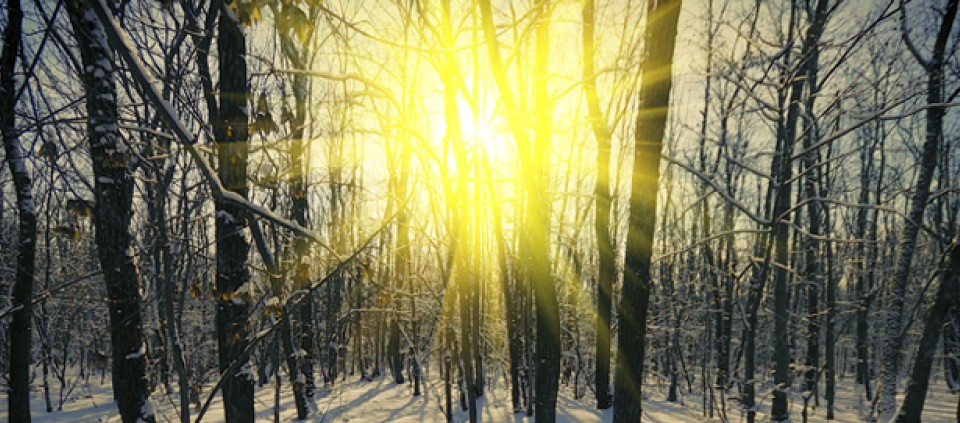Going Inward in the Season of Darkness

In the depths of winter I learned that there lay within me an invincible spring.
—Albert Camus
The winter solstice is the darkest, shortest day of the year. Because of this, it has served as a marker for human beings, a day when we have celebrated the turn back toward the light as the days begin to grow longer. But, for those of us living in cooler climates, December 21 is really just the beginning of the cold, dark time of year.
In fall and winter, as the leaves drop from the trees and the vital sap is drawn into the core of the earth, all living things begin a process of drawing inward and conserving resources. Yogic texts reference a similar process that occurs in the course of practice, when the senses become less externalized and attention turns inward. Patanjali called this process pratyahara, withdrawal of the senses.
Like a turtle drawing its limbs inside its shell, we can pull their attention inside our bodies, minds, and hearts, and explore what dwells there. Winter is a natural time to align with this inward journey. Just as night comes after day, so does the restful time of winter follow the active time of summer, healing and reinvigorating us through darkness and sleep. Winter can be a time to reflect, write, rest, and practice. Then, in spring, when the earth softens and warms, we head out to explore the world and begin to manifest the visions of winter’s dreamtime.
Obviously, we can’t all stop what we’re doing and hibernate all winter, but we can light candles; eat warm, soothing foods; and otherwise slow down and enjoy time spent cozy and close with ourselves and our loved ones. If you’re a yoga teacher, you can guide your students in this process by aligning your classes with the organic rhythms of the season. You can access and teach the benefits of slowing and deepening our breathing (like bears), calming our minds (like snow falling gently on the earth), and settling into the cave of our hearts (like squirrels burrowing into their nests).
In yoga, the outward flow of attention—when we are having a conversation, watching TV, or driving a car—is referred to as apana. Prana refers to the inward flow of energy. Apana is usually strong when we come into a yoga class. After 45 minutes of asana and pranayama, our focus begins to shift within. Our eyes close more easily, our thoughts slow down, and we settle into the sensations of our bodies. Prana allows us to relax and transition into integration, yoga nidra, and the dream state in which we are restored.
Ayurveda teaches that many illnesses—whether rooted in physical, mental, or spiritual “dis-ease”—arise from a disconnection from and lack of attunement to the cycles of nature. We stay up way too late, staring at bright screens that disrupt the natural release of sleep-inducing melatonin. Winter, with its natural push to draw inward, can provide a much-needed balance to the constant activity of the mind and the outward flow of attention. If daytime and summer are the phases of doing, nighttime and winter represent the time for being.
In Norway, even though their days are shorter and their winters longer, the rates of seasonal affective disorder are not significantly higher than in the United States. Recent research suggests that the reasons for this might be cultural rather than physiological. People in Norway tend to enjoy getting cozy, drinking warm beverages, lighting fires, and being with friends and family, as well as skiing and spending time outdoors. Their culture celebrates the natural beauty of winter.
When we focus on the opportunities for balancing and healing that winter brings, we shine a light in the restful darkness of the season.
Micah Mortali is lead Kripalu faculty, the Founder of the Kripalu School of Mindful Outdoor Leadership and author of Rewilding.
Full Bio and Programs